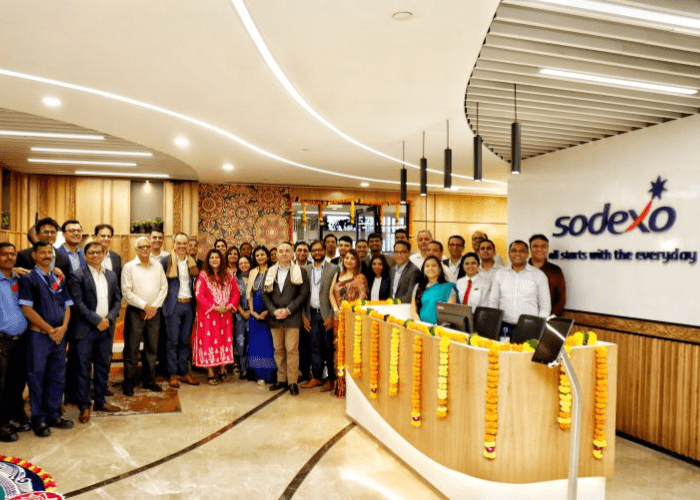How Sodexo India is cooking up gender diversity in traditionally male domains
In the sprawling corporate kitchens and facility management operations across India, women have historically been scarce. The food services sector, with its irregular hours and physically demanding work, has traditionally been considered men’s territory. Yet at Sodexo India, the local arm of the French multinational, women now constitute 19 per cent of the food services workforce and 27 per cent of facility management staff—figures that meaningfully exceed industry averages.
This did not happen by accident. While many companies trumpet diversity as an aspiration, Sodexo has engineered a systematic approach to gender inclusion that begins with entry-level recruitment and extends to the executive suite. The company’s strategy hinges on two complementary programmes, aptly named ‘SheWorks’ and ‘SheLeads’—one focused on bringing economically disadvantaged women into the workforce, the other on propelling mid-career women into leadership.
“We recognise that true inclusivity requires systemic change,” explains Prachi Kulkarni, director, human resources, Sodexo India. “Through gender-balanced hiring shortlists, anonymised CV screening and inclusion training for hiring managers, we ensure a fair and unbiased recruitment process.”
The SheWorks programme, launched in 2019, targets women from underserved communities who might otherwise struggle to find formal employment. It provides technical training in food services and facility management alongside crucial soft skills development, including financial literacy and digital fluency. The company meticulously tracks outcomes for its 1,300 beneficiaries to date, measuring success not merely in recruitment numbers but in retention rates, internal mobility and financial independence.
“Within three to five years, many SheWorks participants advance from entry-level roles to supervisory positions,” reports Kulkarni. “Several women who once faced limited career prospects now enjoy stable, full-time employment with financial security.”
What distinguishes Sodexo’s approach from typical corporate social responsibility initiatives is its responsiveness to practical barriers. Recognising that family obligations and societal norms often restrict women’s employment options, the company introduced a “Spouse Hiring Programme” that allows couples to work at the same site—a particularly effective solution in more traditional communities where male family members might otherwise object to women working outside the home.
This pragmatism extends to the programme’s curriculum. Since its inception, SheWorks has evolved to incorporate digital literacy and customer engagement modules, reflecting changing market demands. Regular feedback mechanisms ensure that skills development remains aligned with actual career advancement opportunities.
While SheWorks addresses the supply side of the diversity equation, SheLeads tackles the more stubborn challenge of advancing women into senior positions. This 10-month leadership development programme equips mid-management women with the skills, networks and confidence to ascend to executive roles.
The programme’s design reflects research showing that women often benefit from more structured career development. Participants receive business strategy training, leadership coaching and, crucially, one-on-one mentorship from senior leaders. The mentor-mentee matching process is notably meticulous, with pairings strategically aligned to career aspirations and business needs.
One SheLeads alumna began at Sodexo as a sub-segment director and has progressed to chief operating officer for facility management growth and strategic accounts—a position with substantial profit-and-loss responsibility. Such internal success stories serve as powerful counterarguments to the notion that women are somehow unsuited to operational leadership in tough-minded commercial sectors.
To reinforce leadership development, Sodexo has partnered with external agencies to deliver specialised workshops for women site leads, providing them with tailored training for effective management in environments that remain predominantly male. This external perspective helps participants navigate industry-wide challenges rather than merely internal company dynamics.
The company’s Young Leaders Programme, which maintains a strict 50:50 gender balance, further strengthens the pipeline of female talent. By providing undergraduate students with structured learning experiences and a clear pathway to managerial roles, Sodexo embeds gender parity into its long-term talent strategy.
None of this has been straightforward. In manufacturing sites and operational leadership roles—areas traditionally dominated by men—resistance has occasionally surfaced. Sodexo’s leadership has addressed this through frank dialogue, gender sensitisation workshops and consistent messaging about business benefits rather than merely moral imperatives.
The company now plans to extend SheWorks to more remote regions, including India’s North-east, while increasing collaborations with non-governmental organisations and skill development institutions. Its target is to raise the conversion rate from SheWorks training to full-time employment to 25 per cent. Meanwhile, SheLeads will expand to include larger cohorts, with particular emphasis on preparing women for technical leadership roles.
What lessons might other companies draw from Sodexo’s experience? First, that gender diversity initiatives prove most effective when integrated into core business operations rather than treated as peripheral social responsibility projects. Second, that addressing practical barriers—from family constraints to skills gaps—yields better results than simply setting numerical targets. And third, that building a pipeline of female talent requires intervention at multiple career stages, from entry-level recruitment to executive development.
The most telling metric of success may be neither the percentage of women in the workforce nor the number in leadership positions, but rather how unremarkable their presence becomes. In Sodexo’s kitchens and on its management sites across India, that day appears increasingly within reach.
Source:
https://www.hrkatha.com/features/a-recipe-for-workplace-equality/





















